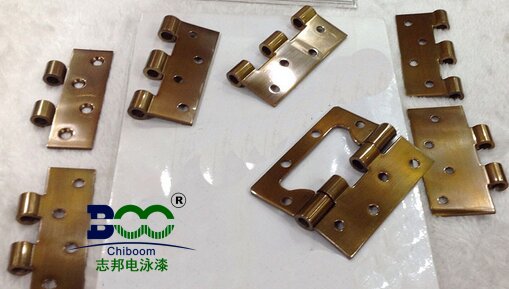Electrophoretic paint process
Electrophoretic Coating Process: Principles, Steps, and Applications
I. Introduction
The electrophoretic coating process is a painting technology that utilizes an electric field to direct the charged particles in the paint to migrate to the surface of the workpiece, forming a uniform coating film. This technology is highly efficient, environmentally friendly, and produces a uniform coating film, making it widely used in industries such as automotive, construction materials, and hardware. This article will introduce the principles, steps, and applications of the electrophoretic coating process in detail.
II. Principles of Electrophoretic Coating
The electrophoretic coating process is mainly based on four fundamental principles: electrophoresis, electrodeposition, electrolysis, and electroosmosis.
Electrophoresis: Under the influence of an electric field, the charged particles in the paint move towards the electrodes. Depending on their charge, particles will move towards different electrodes.
Electrodeposition: When the charged particles reach the electrode surface, they react with the electrode to form insoluble substances and deposit on the electrode surface, forming a coating film.
Electrolysis: Under the influence of an electric field, the electrolytes in the paint undergo electrolytic reactions, generating ions and gases. These ions and gases have a certain influence on the formation and quality of the coating film.
Electroosmosis: Under the influence of an electric field, solvent molecules in the paint move towards the electrodes, forming the phenomenon of electroosmosis. Electroosmosis helps to eliminate bubbles and impurities in the coating film, improving its quality.

III. Steps of Electrophoretic Coating Process
The electrophoretic coating process mainly includes four steps: pretreatment, electrophoretic painting, curing, and post-treatment.
Pretreatment: Pretreatment is a crucial step in the electrophoretic coating process, aiming to remove oil, rust, and other impurities from the surface of the workpiece, providing a good foundation for electrophoretic painting. Pretreatment typically includes degreasing, rust removal, degassing, and phosphating.
Electrophoretic Painting: After pretreatment, the workpiece is immersed in the electrophoretic paint tank. Through the action of a direct current electric field, the charged particles in the paint migrate directionally to the surface of the workpiece, forming a uniform coating film. During electrophoretic painting, it is necessary to control parameters such as current density, voltage, and tank temperature to ensure the quality and stability of the coating film.
Curing: Curing involves heating the electrophoretically painted workpiece to a certain temperature to allow the resins, pigments, and other components in the coating film to undergo chemical reactions, forming a hard coating film. During curing, it is necessary to control the temperature and time to ensure that the coating film is fully cured and meets predetermined performance indicators.
Post-treatment: Post-treatment is aimed at further improving the performance and appearance quality of the coating film. It typically includes degassing, scraping, grinding, and cleaning steps. These steps can remove bubbles, burrs, and impurities from the coating film's surface, improving its smoothness and durability.
IV. Applications of Electrophoretic Coating Process
The electrophoretic coating process is widely used in industries such as automotive, construction materials, and hardware. In the automotive industry, it is mainly used for painting the body and components of vehicles, forming a uniform, smooth, and corrosion-resistant coating film that improves the appearance quality and durability of vehicles. In the construction materials industry, it can be used for painting metal doors, windows, and fences, improving their weather resistance and aesthetics. In the hardware industry, it can be applied to various metal products, such as tools and locks, improving their corrosion resistance and wear resistance.
V. Conclusion
The electrophoretic coating process is a highly efficient, environmentally friendly, and uniform painting technology widely used in various industries. Through reasonable process control and precise operation, a high-quality electrophoretic coating film can be obtained, providing excellent protection and decorative effects for products.





 WeChat
WeChat